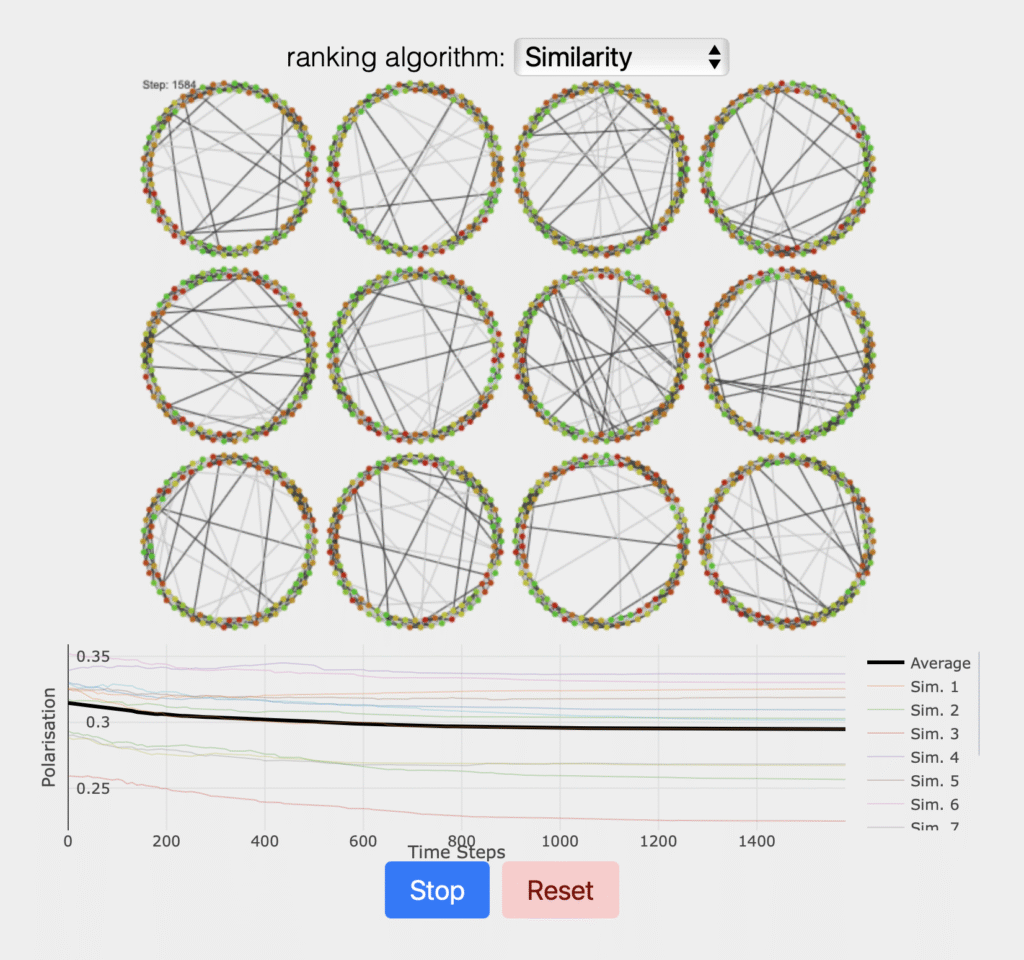In the past weeks, our TWON researcher Fabio Sartori (KIT) and his colleagues worked on a new demonstrator tool to make the dynamics of Online Social Networks tangible for the broad public. The result is: TWONderland!
In our simulation TWONderland, we assign the user the job as the lead designer of a new Online Social Network. In a playful and interactive way, users explore how as the platform designer, they influence the interaction on the platform and how even the tiniest design choices can ripple out to shape behavior, sentiments and relationships between the users – and potentially spark fragmentation and fuel polarization.

Unique about this demonstrator is the step-by-step walkthrough of the functionalities of Online Social Networks (OSNs). The user starts by assigning moods – from aggressive to calm – to fictive platform users. We then visualize how their fictive users are connected to each other on the platform, and how their moods adapt as they are confronted with posts of each other. In TWONderland, every OSN user participates within a specific sentiment corridor, meaning that they will interact with and adapt to other users as long as their differences in sentiment are not too significant. Here, for instance, a very calm user would not immediately interact with somebody who is very aggressive. However, in our demonstrator, we visualize that the sentiment on a platform can still shift in positive and negative directions gradually. These network dynamics were modelled based on the Axelrod model (for further information and technicalities please refer to our Deliverable).
After getting an understanding of network dynamics, the user is asked to experiment with alternative platform mechanisms that determine what users (and their moods) influence their own fictive platform user. Based on the ranking algorithms the user sets, posts with different moods – again, aggressive to calm – will become visible to their fictive character, which influence their mood. From this individual level, the demonstrator then moves on to visualizing bigger networks in which many users influence each other based on the designated platform mechanics. To understand how users influence each other’s mood on OSNs, the user can run comparative simulations and experiment how polarization is fueled or minimized only through the ranking mechanics.

